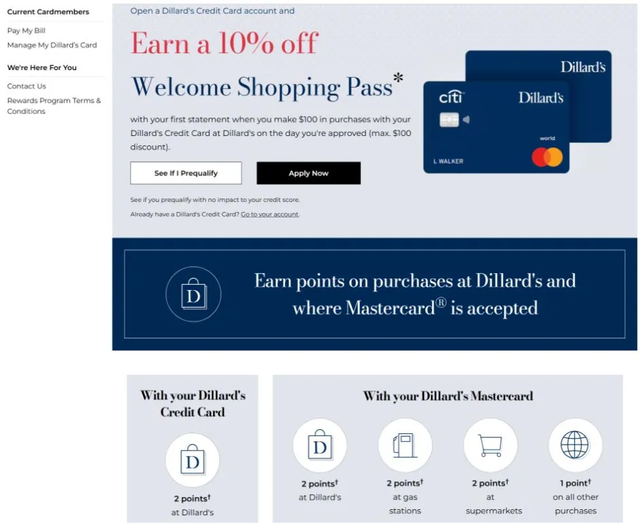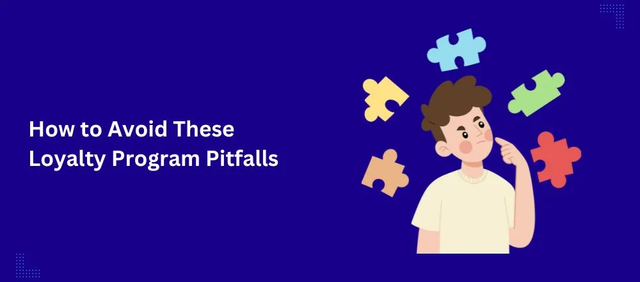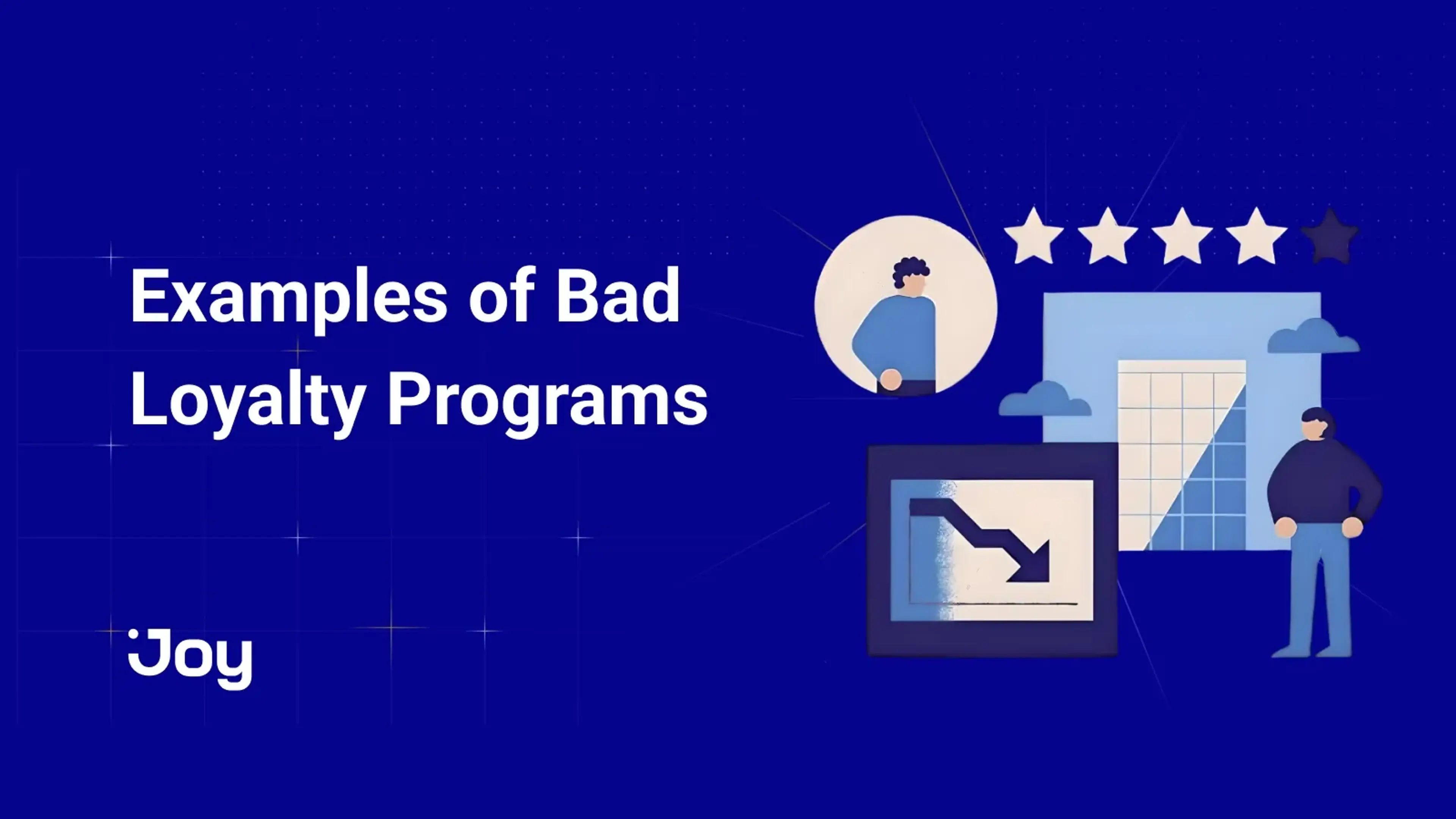Loyalty programs are meant to reward and retain customers, but they can do more harm than good when they fall short. A poorly designed loyalty program can frustrate customers, tarnish your brand, and ultimately drive business away.
This article will explore four real-world examples of bad loyalty programs that serve as cautionary tales. By learning from these mistakes, you can avoid pitfalls and ensure that your loyalty initiatives strengthen, rather than undermine, customer relationships.
Why Do Loyalty Programs Fail?
Here are the most common reasons why loyalty programs fail:
- Difficult or Confusing User Experience: A loyalty program should be simple to join, easy to understand, and seamless to use. Complicated point systems, unclear reward structures, or difficult redemption processes discourage participation.
- Poor Reward Selection: Not all customers want the same rewards. If your program only offers generic discounts or irrelevant rewards, engagement will drop.
- No Personalization: A one-size-fits-all approach no longer works. If your loyalty program doesn’t offer personalized rewards based on purchase history or preferences, customers may not find it valuable.
- Inconsistent or Unreliable Program Management: Consistency and reliability are crucial for building trust and maintaining customer satisfaction. Loyalty programs with frequent rule changes, inconsistent reward availability, or technical glitches can lead to customer frustration and distrust.
- Failing to Adapt to Changing Customer Needs: Customer needs and preferences are constantly evolving. Loyalty programs that remain stagnant and fail to adapt to these changes can quickly become irrelevant and lose their appeal.
4 Examples of Bad Loyalty Programs
Even big brands can stumble when it comes to creating a rewarding and engaging program. Here are 4 real-world examples of loyalty programs that missed the mark:
Old Navy’s SuperCash – Complex Program

Old Navy, a popular clothing retailer, created the SuperCash program to reward customers and encourage repeat purchases. However, despite its intention to boost loyalty, the program failed due to confusing rules, restrictive policies, and poor customer satisfaction.
Why the Program Failed
- Confusing Earning and Redemption Rules: The program required customers to spend specific amounts (e.g., $50 to earn $20, $100 to earn $40, etc.) to receive SuperCash. To redeem the SuperCash, customers also had to meet a separate spending minimum. This double threshold created confusion, with many customers feeling the “reward” wasn’t really worth it because it required more spending to use.
- Short Expiry Period: SuperCash had a very limited redemption window, usually lasting only a couple of weeks. Customers who didn’t shop again within this period lost their rewards. This caused frustration among shoppers who couldn’t make another purchase quickly, making them feel penalized rather than rewarded.
- Restrictions on Use: SuperCash couldn’t be combined with other discounts or promotions. For example, if Old Navy had a sale on items, customers couldn’t use their SuperCash at the same time.
What Old Navy Could Have Done Better:
- Simplify the Program: Make the program rules and redemption process easier to understand and use.
- Extend Redemption Windows: Allow customers more time to use their rewards. The best redemption period is 3–6 months.
- Increase Flexibility in Use: Combine SuperCash with other discounts or sales to make it feel like a true reward.
- Offer More Attractive Rewards: Increase the value of the rewards offered, such as larger discounts or exclusive merchandise.
- Improve Communication: Use clear, simple language to explain how the program works.
Dillard’s Rewards – Unattractive Rewards

Dillard’s, a well-known American department store chain, offers a credit card-based rewards program in which customers earn points for every dollar spent. While the program aims to drive repeat purchases, it has been criticized for its unappealing and restrictive reward structure.
Why the Program Failed
- Low Points-to-Rewards Value: Customers earn 2 points per $1 spent, but they must accumulate 1,500 points just to receive a $10 reward—effectively giving back only 1.3% in rewards. Compared to other retailers offering higher cashback or better perks, this felt underwhelming.
- Credit Card Requirement: Unlike flexible loyalty programs, Dillard’s Rewards is exclusive to credit card holders, excluding many potential loyal customers who prefer debit or other payment methods.
- Limited Redemption Options: Rewards were restricted to $10 certificates or 10% discounts at Dillard’s, with no flexibility for cash back, travel, or gift cards. This narrow scope fails to cater to a broader range of customer preferences and needs.
What Dillard’s Could Have Done Better:
- Offer More Attractive & Attainable Rewards – Reduce the points threshold or offer more frequent, lower-value rewards (e.g., a $5 reward at 500 points).
- Add Flexible Redemption Options: Allow customers to redeem points for cash back, travel, or gift cards.
- Make the Program Accessible Without a Credit Card – Allow all customers to participate, regardless of payment method.
- Provide Attractive Bonus Categories: Introduce high-value categories, such as 5x points for purchases at Dillard’s or during special promotional periods.
- Incorporate Tiered Loyalty & Personalized Perks: Introduce VIP tiers that offer exclusive perks, such as free shipping, early access to sales, or birthday discounts.
Tesco Clubcard’s – Sudden Reward Reduction

Tesco, one of the UK’s largest supermarket chains, runs the Tesco Clubcard, a long-standing loyalty program that allows shoppers to earn points on purchases and redeem them for discounts, dining vouchers, and other rewards.
However, in 2018, Tesco suddenly halved the value of Clubcard points when used for dining and partner rewards, reducing their appeal. In 2023, Tesco further devalued its Clubcard rewards, causing backlash from loyal customers.
Why the Program Failed
- Unexpected Devaluation: Customers who had accumulated points expecting higher redemption value felt betrayed when Tesco slashed their worth without warning.
- Loss of Incentive: Many customers used Clubcard points specifically for dining and partner rewards, so the reduction significantly diminished the program’s attractiveness.
- Erosion of Customer Trust: By making these changes without proper communication or transition periods, Tesco alienated long-time members who felt their loyalty was not valued.
- No Meaningful Alternatives: Tesco did not introduce new, compelling benefits to compensate for the reduced value, making the program feel less rewarding overall.
What Tesco Could Have Done Better:
- Transparent Communication: Any changes to loyalty programs should be communicated well in advance.
- Phased Implementation: Gradually introducing changes allows customers to adapt without feeling abruptly disadvantaged. A phased approach can mitigate negative reactions and provide time for feedback.
- Offer Alternative Value: If certain rewards are reduced, provide new redemption options, such as tiered discounts, exclusive experiences, or member-only promotions, to keep the program appealing.
- Reward Long-Term Loyalty: Introduce VIP tiers or milestone rewards for long-standing members to show appreciation and retain engagement.
Sears Shop Your Way Rewards – Overload Promotion

Sears, once a leading American department store, introduced Shop Your Way Rewards, a loyalty program designed to retain customers by offering points on purchases. These points could be redeemed for discounts on future shopping.
While the concept was promising, excessive promotions and an overwhelming volume of offers led to customer frustration rather than loyalty.
Why the Program Failed
- Promotion Overload: Sears bombarded customers with too many emails, notifications, and discount offers, causing message fatigue and making it difficult to distinguish valuable rewards from every day promotions.
- Devalued Rewards: Frequent discounts and constantly shifting promotions diluted the perceived exclusivity of rewards, making customers feel like they weren’t gaining any real advantage from the loyalty program.
- Complex Redemption Process: The program’s confusing point expiration rules, limited redemption windows, and restrictions on what purchases qualified frustrated customers trying to use their rewards.
- Lack of Personalization: Instead of targeting promotions based on purchase history, Sears took a mass-marketing approach, sending generic deals that weren’t relevant to individual shoppers.
What Sears Could Have Done Better:
- Exclusive and Timely Promotions: Offer targeted promotions at a reasonable frequency to maintain exclusivity and enhance customer interest.
- Simplified Rewards Structure: Create a straightforward, easy-to-understand points system with clear redemption options to minimize confusion.
- Transparency and Communication: Clearly convey the value of rewards and provide guidance on how customers can maximize their benefits.
- Focus on Core Brand Identity: Build the program around the brand’s strengths and unique selling points instead of overly relying on unrelated partnerships.
- Personalize Offers & Rewards: Use customer data to provide targeted, relevant rewards based on shopping behavior rather than mass promotions.
The Impact of a Failing Loyalty Program
A failing loyalty program can have far-reaching consequences for a business, impacting various aspects of its operations, customer relationships, and profitability:
- Losing Valuable Customers: When a loyalty program fails to deliver on its promises or provides a negative experience, customers are more likely to churn and take their business elsewhere. This can lead to a loss of valuable repeat customers who contribute significantly to revenue.
- Brand Reputation Damage: Unfulfilled loyalty promises erode trust, making the brand seem unreliable. Negative word-of-mouth can amplify dissatisfaction, damaging the brand’s standing in a competitive market.
- Financial Losses: Investing in a loyalty program that doesn’t deliver results can lead to financial losses, as the costs of rewards, technology, and marketing efforts may not be recouped through increased customer spending, which hurts retention.
- Competitive Disadvantage: Customers may switch to competitors offering better rewards and experiences. Over time, this weakens the company’s market position, and the brand risks being seen as less customer-focused.
How to Avoid These Loyalty Program Pitfalls

Here’s how to steer clear of common loyalty program failures:
- Understand Your Customers: Conduct surveys, focus groups, and analyze purchase behavior to know what your customers truly value. Tailor your loyalty program rewards and structure to meet their specific preferences and needs.
- Offer Genuine Value: Ensure the program provides rewards that feel attainable and meaningful. Avoid overly complex systems that discourage participation and deliver clear, tangible benefits that customers can easily recognize.
- Simplify the Experience: Create a seamless and user-friendly experience for customers. Use intuitive technology, clear rules, and transparent communication to make earning and redeeming rewards simple and enjoyable.
- Personalize Engagement: Leverage customer data to deliver personalized offers, recommendations, and experiences. Tailored communication and rewards make customers feel valued and deepen their connection with the brand.
- Monitor and Adjust Regularly: Track program performance using metrics such as engagement rates, redemption rates, and customer feedback. Based on data insights, continuously refine the program to keep it relevant and effective.
- Train Employees to Advocate: Educate your employees on the program’s benefits and mechanics. Empower them to enthusiastically promote the program and confidently and clearly handle customer queries.
Bottom Line
Four bad loyalty programs we’ve explored highlight what happens when businesses fail to prioritize customer satisfaction, transparency, and usability.
By learning from these examples and following the best practices we’ve discussed, you can avoid common pitfalls and create a loyalty program that truly rewards your customers and drives business success.



-a7e9a3.png?width=828&q=75&f=webp&auto=format)
